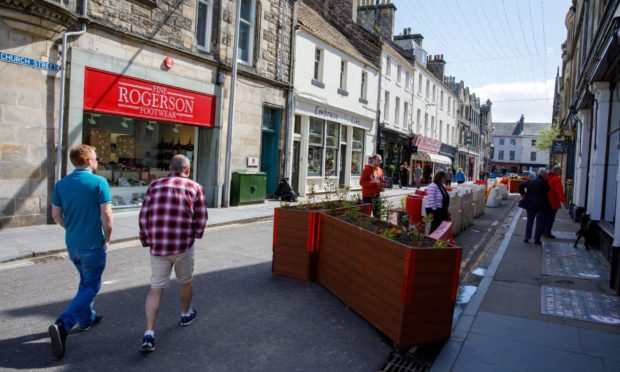Of the many changes lockdown brought, the transport ones in our town centres are some of the most unexpected.
While we were locked down in our homes officials quietly set about reshaping how we are expected to get about the place.
They called it Spaces for People.
The reasoning was sound – give pedestrians, cyclists and other wheelers more space to keep them safe.
It wasn’t just from the virus, but traffic too, as 20mph roads, pedestrian zones, plastic bollards, street seating and earth-filled planters appeared – in our towns and cities.
It wasn’t quite overnight, but it felt like it.
Now councils are making the lockdown Spaces for People changes permanent, many are asking what has happened to their town centre and why.
And did it all happen when they were looking the other way.
Jargon busting
The mission to get more people walking, cycling and wheeling attracts jargon like my bike chain picks up road grime.
The Scottish Government backed Spaces for People programme in lockdown is responsible for most of the more visible town centre changes.
The near £40m spaces for people initiative saw funding – initially earmarked for the Places for Everyone scheme – allocated to councils for temporary measures.
Yeah. Spaces for People and Places for Everyone. Keep up at the back.
Both schemes have similar jobs. Delivering improved infrastructure to support walking, cycling and wheeling.
The Scottish Government doled out cash to councils for both through active travel charity Sustrans.
Active travel. Now there’s another one.
Many will be familiar with active travel already. But for those new to the topic, it’s a clunky – but as yet unbested attempt – to get cyclists, walkers, runners, scooters, wheelchair users and more all into a sentence much shorter than this one.
Marmite
With us all shut up in houses, government at all levels decided the time was ripe to push forward with making active travel easier.
Hence the temporary changes.
Only they’re not so temporary anymore. Some places – including Dundee – have already decided to keep them for good.
And the measures continue to divide opinion.
Cyclists and environmental campaigners are unsurprisingly in the ‘yes’ camp.
They highlight the green benefits, the boost for some businesses in pedestrianised zones and the added security for travellers that comes from lower speed limits.
However, there have been reports of some drivers becoming frustrated and resorting to illegal and dangerous forms of driving.
Others have welcomed the idea, but struck out at bungled implementation in some places.
And even more bungled in others.
But those experiences are not holding anyone – at least not anyone in power – back.
Spaces for People. Places for Everyone. Active Travel. Low Traffic Neighbourhoods.
You can take your pick.
Whatever you want to call them – they are here to stay.
Spaces for People: What is the active travel scheme transforming Scotland’s roads?
